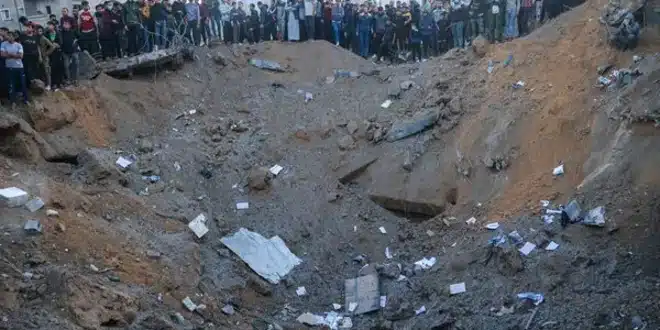The Israeli military has issued a new evacuation directive for Palestinians in central Gaza, signaling plans to intensify its campaign against Hamas in previously untouched areas. The announcement came on Sunday, with military spokesperson Avichay Adraee warning civilians in Deir el-Balah and surrounding regions to leave immediately in anticipation of upcoming military activity.
Expanding the Battlefield
According to Adraee, Israel is broadening its operations near Deir el-Balah, including territories where no prior military maneuvers had taken place. He urged both residents and internally displaced Palestinians to relocate southward toward the coastal al-Mawasi region for their safety. This area has often been designated as a “humanitarian zone,” though overcrowding and poor living conditions persist there.
This warning is part of a broader pattern seen throughout the nearly two-year conflict. Since the war began in October 2023, Israel has repeatedly called for civilian evacuations across Gaza, often forcing people to move multiple times. The United Nations Office for the Coordination of Humanitarian Affairs (OCHA) reported in January that more than 80% of Gaza’s territory remained under Israeli evacuation orders.
Families of Hostages Raise Concerns
The expansion of Israel’s military activity has alarmed families of hostages still held by Hamas in Gaza. In a statement released by a grassroots advocacy group, these families demanded that the government clarify its strategy, particularly in relation to how military operations might affect the fate of the captives. They emphasized the need for transparency and called for concrete plans to ensure the safety of those abducted during Hamas’ initial attack.
During that October 7 assault, Hamas militants killed 1,219 individuals in Israel—mostly civilians—and kidnapped 251 people, according to figures compiled by AFP from official sources. As of now, Israel reports that 49 hostages remain in Gaza, including 27 believed to have died.
Efforts to secure a truce have been underway, with Israeli and Hamas representatives engaged in indirect negotiations over the past two weeks. The proposed ceasefire would last 60 days and include the release of 10 surviving hostages.
Civilian Deaths and Continued Ground Operations
The humanitarian toll of the conflict continues to rise. Overnight Israeli airstrikes on Sunday reportedly killed at least seven people in Gaza City and parts of southern Gaza, according to the local civil defense agency. These fatalities are part of a much larger death toll. The Hamas-controlled health ministry in Gaza reports that at least 58,765 Palestinians have been killed during the Israeli campaign, the majority of them civilians.
On the battlefield, the Israeli Defense Forces (IDF) announced they had intensified ground operations in the Jabalia area in northern Gaza. The military claims to have killed “dozens of terrorists” and neutralized “hundreds of terrorist infrastructure” elements. Notably, the IDF reported dismantling underground tunnels stretching 2.7 kilometers in length and located roughly 20 meters below the surface.
Mounting Pressure on Israeli Leadership
Public pressure is growing within Israel as families of the hostages continue their campaign for action. Over the weekend, demonstrators gathered in Tel Aviv, demanding that Prime Minister Benjamin Netanyahu and international allies like U.S. President Joe Biden prioritize the safe return of the captives and move toward ending the war.
While the fighting rages on, the balance between military objectives and humanitarian concerns remains at the heart of the ongoing crisis. With new offensives underway and diplomatic efforts still unfolding, the path forward remains fraught with complexity and urgency.


